Weekly Roundup- October 14th
Nubian jewelry, Nefertiti's mummy discovered(?!), a new discovery at Saqqara, 'Whitewashing' Egyptology, and John Oliver's take on museums reckoning with their colonialist pasts
Jewelry of Nubia’s Royal Women Talk by Dr. Solange Ashby
UCLA’s own Dr. Solanage Ashby will be presenting this Saturday, October 15th @ 2pm in-person and over Zoom (RSVP here).
Some of the most exquisite and skillfully crafted jewelry of the ancient world came from Nubia, a region spanning southern Egypt and northern Sudan. Egyptologist Solange Ashby takes a closer look at adornments worn by priestesses and queens who often served in ritual roles associated with the goddess Hathor. Ashby provides historical and religious context for stunning objects excavated in Sudan in the early 20th century, including ones on view in the exhibition Nubia: Jewels of Ancient Sudan From the Museum of Fine Arts, Boston.
Ashby’s received her PhD in Egyptology from the University of Chicago. Dr. Ashby’s expertise in sacred ancient languages, including Egyptian hieroglyphs, underpins her research into the history of religious transformation in Northeast Africa. Her first book, Calling Out to Isis: The Enduring Nubian Presence at Philae, explores the temple of Philae as a sacred site. Ashby has been awarded a President’s Postdoctoral Fellowship at the University of California, Los Angeles. In 2023, she will join the faculty of the department of Near Eastern Languages and Cultures at UCLA where she will teach Egyptology and Nubian Studies.
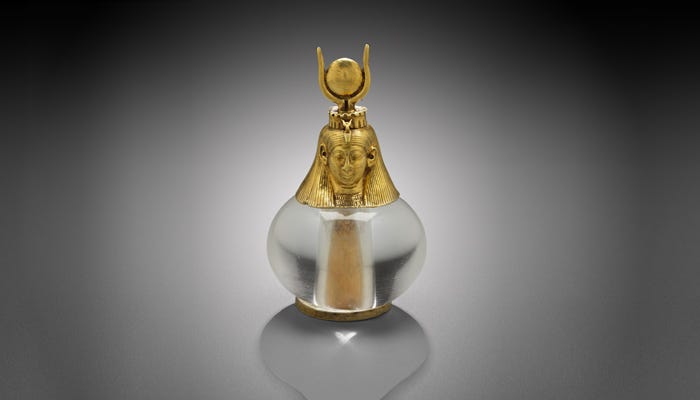
Queen Nefertiti's Mummy May Have Been Found, Says Leading Archaeologist
It continues to be a big Nefertiti news week! Not about her possible tomb this time, but her mummy. Zahi Hawass is said to have narrowed down Nefertitit’s mummy from one of the couple caches we have found with family members from the 18th Dynasty. We have known about the aDNA evidence for awhile now so the claim that Nefertiti’s mummy was found is not exactly “news.” The idea that KV21B is Nefertiti is an old claim that Hawass made when the aDNA results were released in 2010. Still, since so many of these 18th Dynasty royal personages were related to each other, how much does a genetic relation *really* say? Can it prove that it was Nefertiti herself when we don’t know who her parents were? Or is it simply more proof of a genetically interwoven family tree?
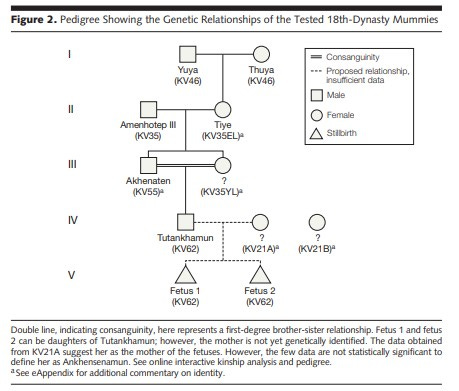
Originally, Hawass’ team could not get complete samples from the KV21B mummy except to say that the individual was related to the 18th Dynasty line. Were new aDNA tests done in the meantime that allows Hawass to assert this claim definitively, as he has done with Hatshepsut (and Kara doubts that identification too, for the record…)? Nefertiti’s parentage and ancestry are unclear so new aDNA results create a circular logic loop.

Sarcophagus of King Ramses II’s head of treasury unearthed in Saqqara, Giza
An Egyptian mission working to the south of the Unas Causeway in Saqarra came upon the burial chamber of Ptahemwia’s tomb re-discovered last year. The sarcophagus provides the titles of Ptahemwia including royal scribe, the great overseer of the cattle in the temple of Ramses II, the head of the treasury, and the one responsible for the offerings of all gods of Upper and Lower Egypt. Pretty important guy, after all…
The tomb was thought to be empty but the team was clearing the space further and came upon a step of stair that led into the burial chamber with the sarcophagus. The lid was broken in half and was still in place, but the sarcophagus was empty inside. Cursory examination of the photos suggest it was originally painted. Look closely at the headdress, and you can see remnants of blue striping! The piece is also anthropoid, or body shaped, and the face is hieroglyph-like in that it looks just like the ‘face’ sign from the Egyptian language. The sarcophagus is covered with chapters 151 and 161 from the Book of the Dead, which is all about how the body can be protected from decay and dismemberment, important things to worry about if you are heading to the afterlife!
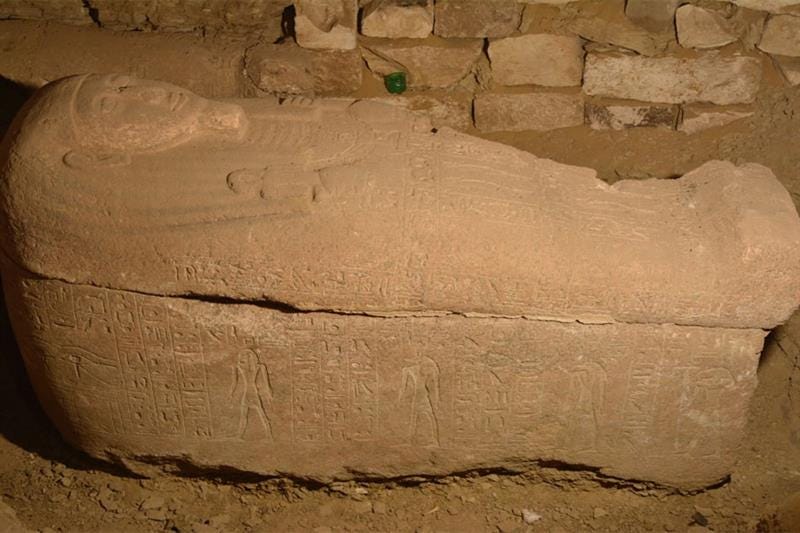
Egyptians push back against 'whitewashing' of Egyptology
Egyptology is going through a reckoning. The field is irreversibly tied to colonialism and the contribution of Egyptians to their own history has often been hidden or erased from the Egyptology completely. From the team members who helped with countless excavations to the Quftis and Gurnawi who pass down their craft knowledge for generations, modern Egyptians played and continue to play the most invaluable roles in the field.
With both the Tutankhamen centennial and the 200 year anniversary of the decipherment of hieroglyphs celebrations ongoing (and renewed calls for the return of the Rosetta Stone) we can all take a moment to consider again who owns the past and imagine a future of renewed cooperation and collaboration that gives more power to indigenous voices.
Interested to learn about about the legacy of colonialism in Egyptology and the contributions by Egyptians to the field? Check out our faves on this topic:
Stephen Quirke. 2010. Hidden Hands: Egyptian Workforces in the Petrie Archives, 1880-1924.
Christina Riggs. 2019. Photographing Tutankhamun: archaeology, ancient Egypt, and the archive.
Malcolm Reid. 2015. Contesting Antiquity in Egypt: Archaeologies, Museums, and Struggles for Identities from World War I to Nassar.
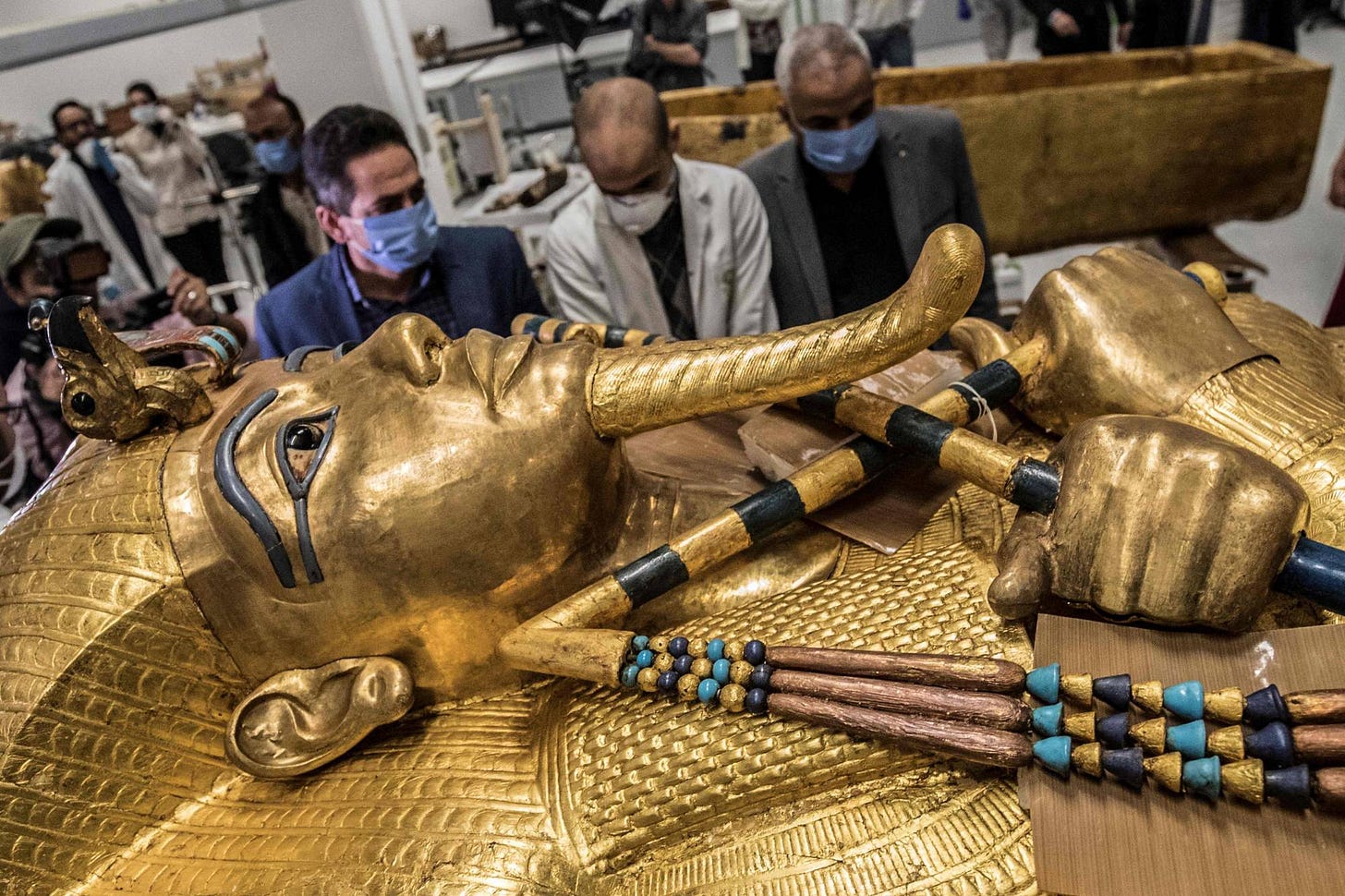
Update: The Rebirth of Archaeology in Iraq
After over 20 years of political instability, many west Asian museums are reopening and many archaeological missions are heading back to work. The Iraq National Museum recently reopened in March with beautiful new galleries showcasing many of the incredible artifacts of the country. The Mosul Museum is still being rebuilt and hopes to be open again in 5 years.
Hopefully tourism increases in the region—we would certainly love to go!
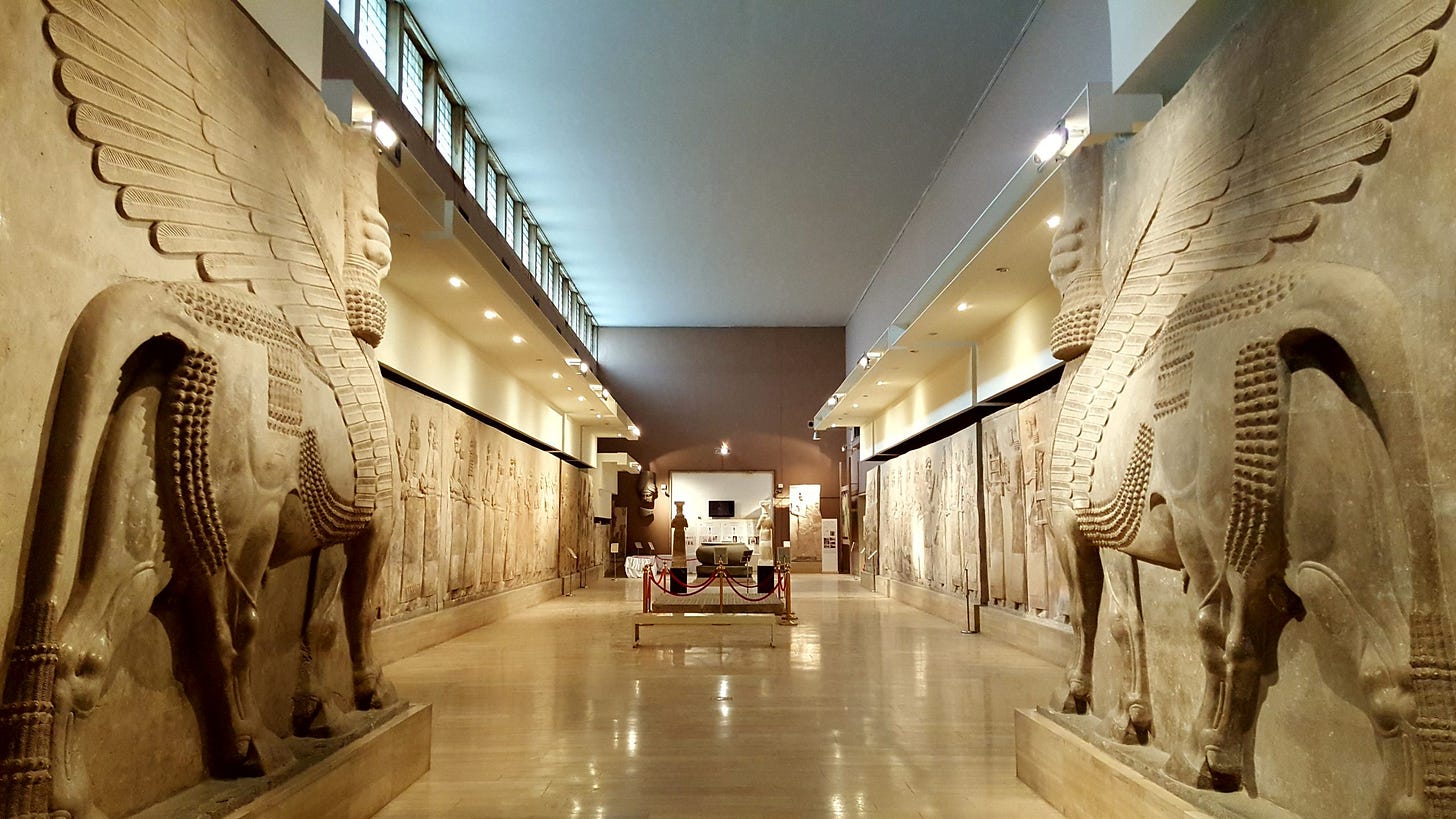
When Will Museums Tell the Whole Truth About Their Antiquities?
Did you see John Oliver’s recent Last Week Tonight episode on the dark-side of Museums? If not, we’ve linked to it below. We’re happy to see these topics tackled by such a popular show.
Sadly, many of the issues brought up by Oliver have been plaguing museums for years with a lot of recent calls for museums to address their harmful practices from repatriation of objects, divestment from “dark” money, and acknowledgment of their troubled pasts. We have linked a few other articles below that might be of interest:
When Will Museums Tell the Whole Truth about their Antiquities, Hyperallergic
Egyptians call for the return of the Rosetta Stone and other ancient artifacts, NPR
Getty to Return Three Major Sculptures to Italy, New York Times
Penn Museum to Bury Skulls of Enslaved People, New York Times
Smithsonian gives back 29 Benin bronzes to Nigeria: ‘We are not owners’, Washington Post
New U.K. Prime Minister Rejects Possible Deal Over Return of the Parthenon Marbles to Greece, Art News
These Museums Still Have The Sackler Name Up Despite Opioid Crisis Controversy, Forbes




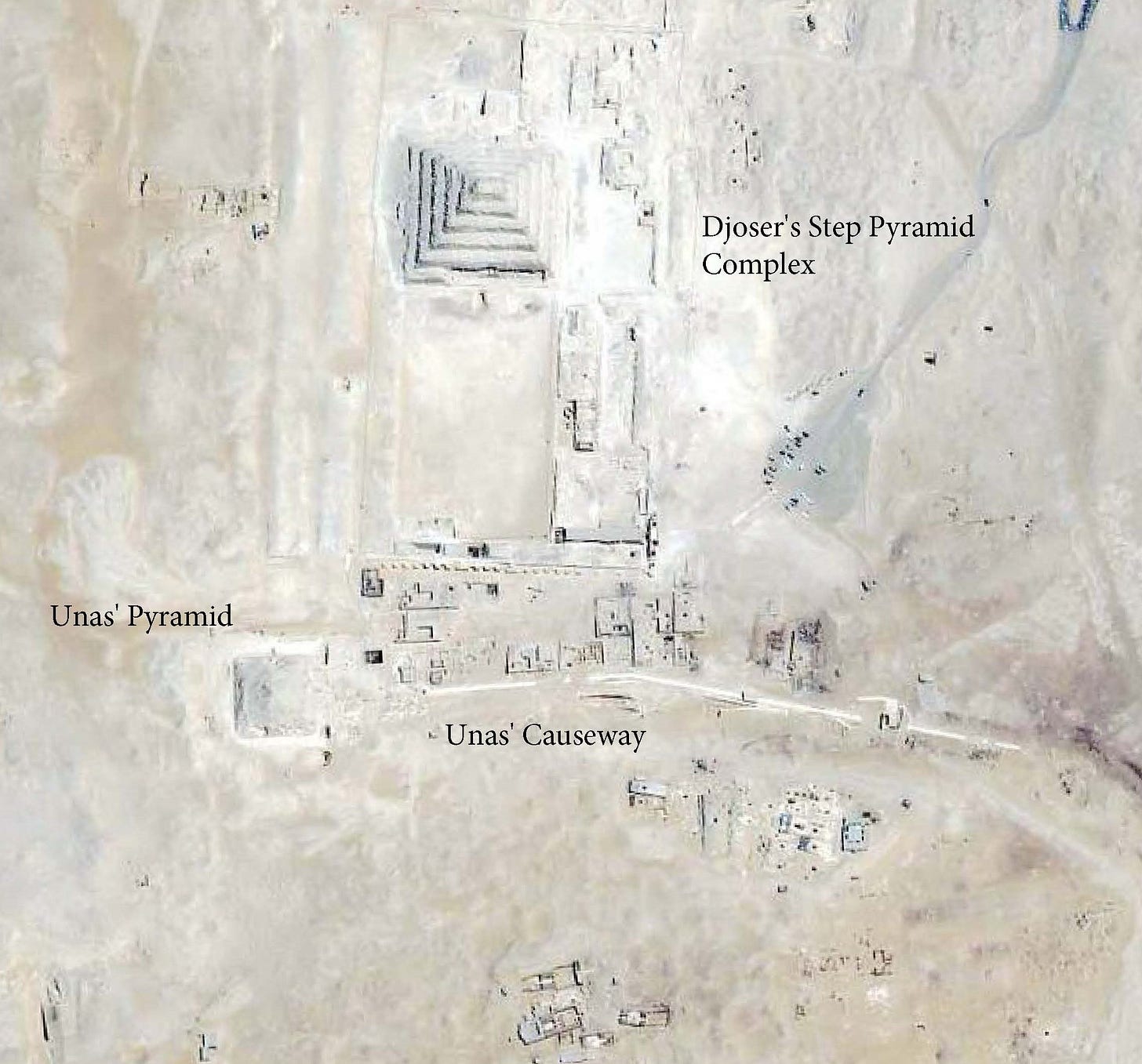
Hate that I missed it